Interview with Anesthesiology Resident and creative, Dr. Sumana Mahata
Creative science-themed patterns that bring science and art together
This month, I’m very excited to share my interview with Dr. Sumana Mahata, an anesthesiology resident in California. I first met Sumana at our Women’s Physician Artist Consortium (WPAC), our group of over 50 Women Physician Artists who combine art with medicine. When I first heard her story, I was intrigued with her art and excited to learn that one of her pieces ended up on Dr. Fauci’s mask during the height of Covid. Take a peak at her many science-themed creative fabrics here. Please enjoy the following interview with the very creative Dr. Mahata.
Here’s her bio:
Sumana Mahata is an Anesthesiology Resident at Riverside University Health System and a creative specializing in science-themed patterns. While at medical school at UC San Diego, she started creating science patterns, one of which was worn by Dr. Fauci during the pandemic. She has illustrated for conferences, contributed graphical abstracts, and created resources to help others learn medicine.
Can you tell us more about your story?
A broad question, but I think the story of all stories to tell would be the Fauci one, as it delineates my artistic journey into a “before” and “after”. I found that my art was treated as more of a hobby/pastime more than anything else “before,” and people understood the impact that my art could have in the “after” which has led to many opportunities.
As I remember it, I woke up one fine Saturday morning to a message from someone on Instagram congratulating me. Upon further questioning, they pointed out that they saw Dr. Fauci on TV during one of those “White House Coronavirus Task Force” meetings wearing a mask with a design on it that was clearly not commercial fabric because of the neutrophils on it. Said person then looked far and wide on the internet and then found my page, which was very serendipitous. When my medical school and friends found out it was a frenzy of excitement which led to the opportunities I have had to share my art along the way.
How often do you create? Does it relieve stress from your job?
I create when I have the bandwidth to do so—unfortunately I am usually too tired after a day’s work and studying to sit down and make something. I will admit that there is usually some idea floating around in my head, waiting to be put to paper/screen. My patterns are usually related to something that I’m learning at the time, hence the abundance of anesthesia-adjacent patterns of late.
When is your favorite time to create?
My favorite time to create is when I don’t have a sense of time ticking on around me. I find that residency is so busy that I appreciate when I have free time without the constraints of pre-op-ing my patients for the next day or a week of nights that make my days feel like a perpetual countdown.
What’s your process?
My process depends on what I’m creating.
If it’s a pattern, I work on the individual elements of a pattern first, either by drawing on my iPad, creating vectors on my graphic design program (Affinity — highly recommend! It’s like Adobe but with a one time payment), or hand-drawing and scanning; then working on the layout of the pattern in Affinity. There’s a bit of a process with respect to uploading said patterns onto the websites I sell on, but I’ve streamlined a lot of the processes with a template that tiles patterns for me so that I do not need to do that by hand. I try to make the patterns fabric friendly and scaled for scrub caps because I have found that most people buying my fabric are making scrub caps, and it is the vast majority of what I make with my fabric.
Most of my drawings of people utilize a base image that I line draw over, then fill in with another layer of color underneath. Depending on my mood, these end up looking very detailed and maximalist or very simple, which I think means that I haven’t quite found my voice yet.
When creating figures or drawings/designs for academic pursuits, I take the time to understand what people are looking for in their art and what messages they are trying to convey. I try to incorporate those asks into a draft and then iterate as needed from there. One of my more challenging projects was creating a figure depicting the Barrow classification of carotid-cavernous fistulas—I ended up going through images with the neurosurgeons to actually understand what I was drawing and how to simplify the pictures to emphasize what is important. That figure ended up becoming the cover of the journal in the month it was published, which was a sweet surprise!
Who are your favorite artists?
There are many artists that inspire me, here’s some of them:
Shirlene Obuobi - She is a cartoonist, cardiologist, author (I may or may not have signed copies of both of her books) but her comics sometimes touch on some very raw aspects of medical training that make her so relateable. She was my commencement speaker when I graduated from medical school and it was so nice to see another creative in medicine.
M.C. Escher - I appreciate him mostly for his mastery of patterns and optical illusions. I got to see his work up close in a reproduction in one of the dorms I lived in during college (https://calteches.library.caltech.edu/4869/1/SoCaltech.pdf) and then went to a gallery of his work in Boston, which solidified that connection.
Asher Jay - She is a National Geographic Explorer who creates pieces that help bring awareness to issues related to animal conservation. Her art really affects my emotions about the topic, which I think is the point.
What is your favorite medium (ink, digital, paint, etc) and subject matter?
I know that I am now more focused on digital mediums, mostly because I am able to create things that scale effortlessly and it’s easy to set up, but I think if I had the space to practice I quite enjoy painting on canvases. There’s something about the tactileness of making art that gets my hands dirty versus what I actually execute. I enjoy dabbling in embroidery and sewing with my patterns so maybe that taps into my love of hands-on projects.
With respect to subject matter, my favorite patterns have been those that feature microscopic scaled elements, like organelles, cells, bacteria, viruses. I enjoy bringing people’s moments to life too.
What would be your dream project?
I would love to be able to contribute to a huge mural someplace. Maybe something in a hospital environment that celebrates all the members of the healthcare team or uplifts patients, or something at a school to let kids see that it’s possible to have both the arts and the sciences in one’s life. I am interested in medical education, so this hypothetical mural project would probably turn into some sort of mentoring/encouragement opportunity that I wish I had in elementary school. I also have an interest in illustrating materials for patients—it would be nice to have a primer on epidurals to give to OB patients so that we’re not trying to consent while they’re in significant pain, for example.
Do you have any advice for creatives who work in the medical field?
Please hold onto it! I think that it is an underappreciated skill that not only is powerful in the medical field, but helps maintain your sanity outside of it. Find a work environment that supports and nurtures that side of you (I found a residency program that really encourages me to keep creating), even if your art is not related to medicine.
Where to follow you: (website or social media)
www.hodgepodgebricolage.com
@hodgepodgebricolage on Instagram
Did you enjoy this interview? Click below to read more interviews with other medical creatives….
Interview with Pathologist and collagist, Dr. Laura Tafe
An ER doctor’s creative interpretation of Inktober
Interview with Surgeon and Children's book illustrator Dr. Maria Baimas-George



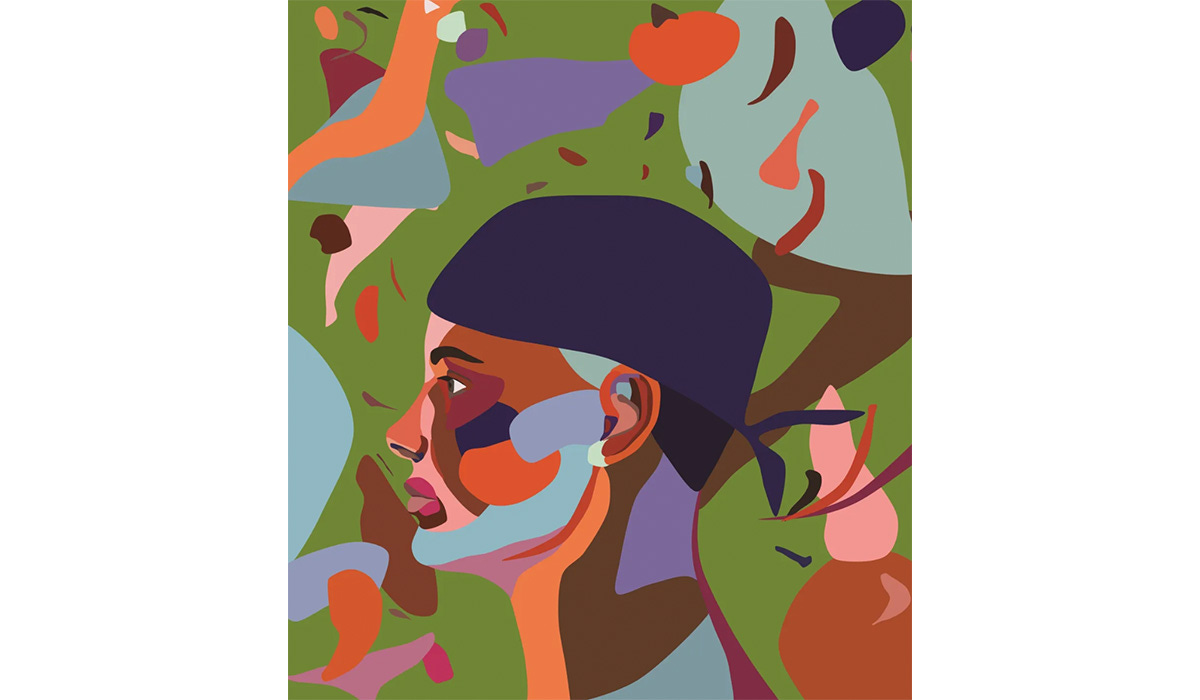
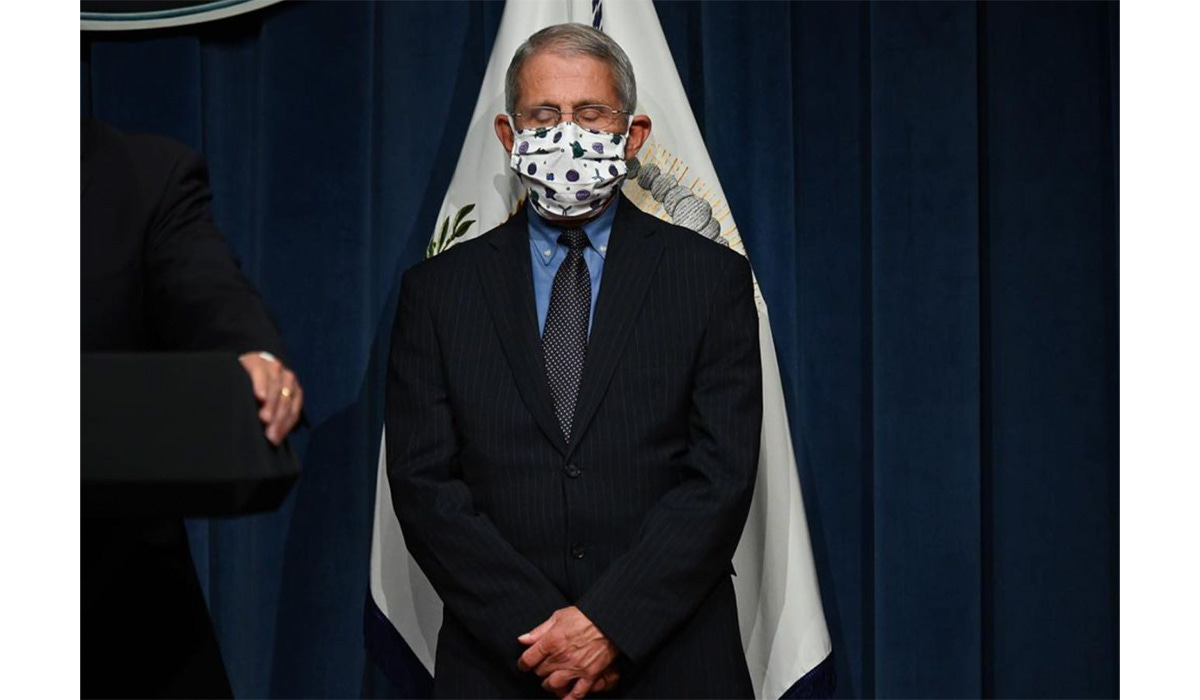
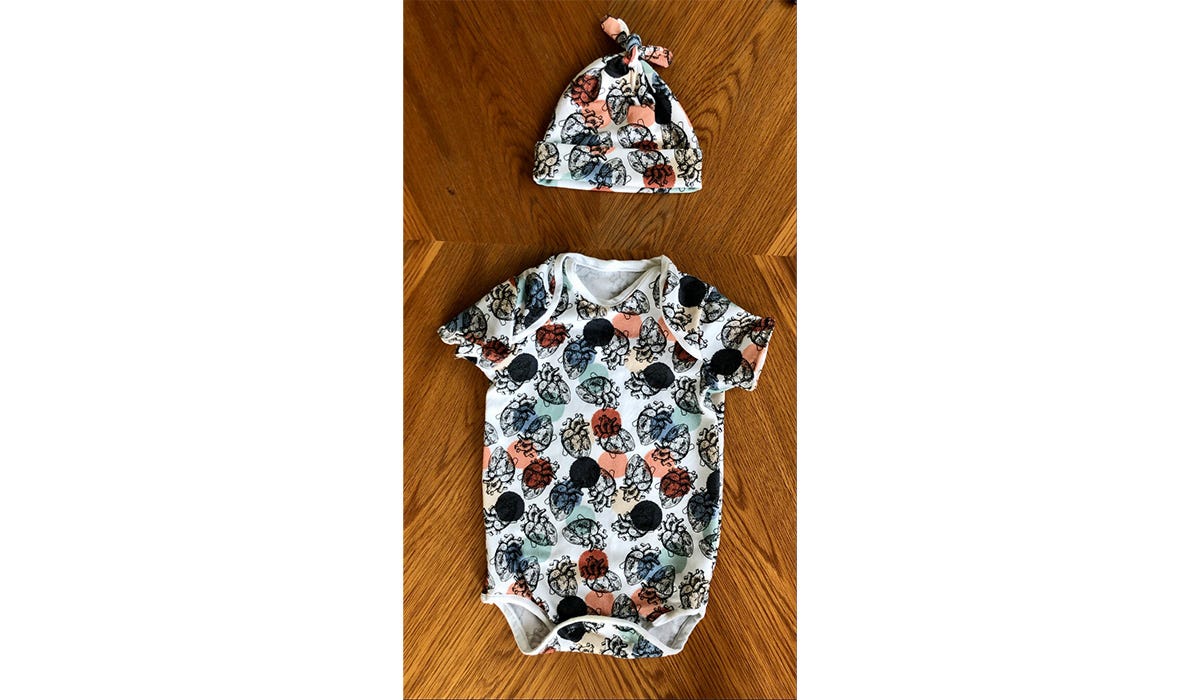
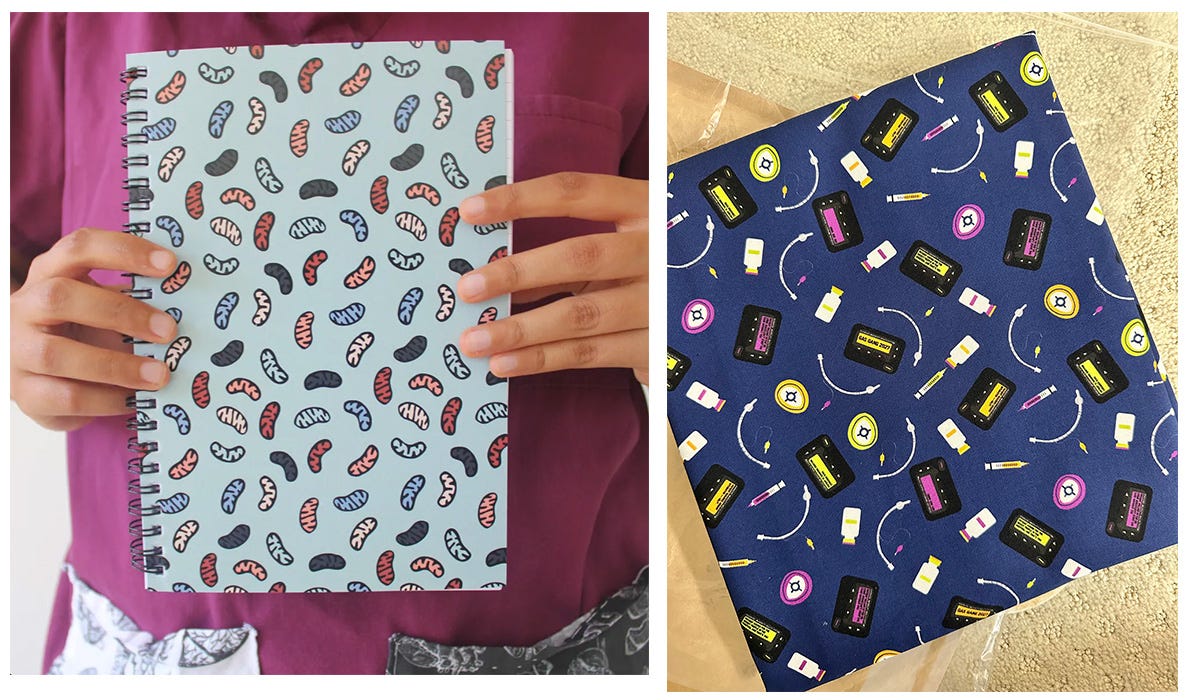
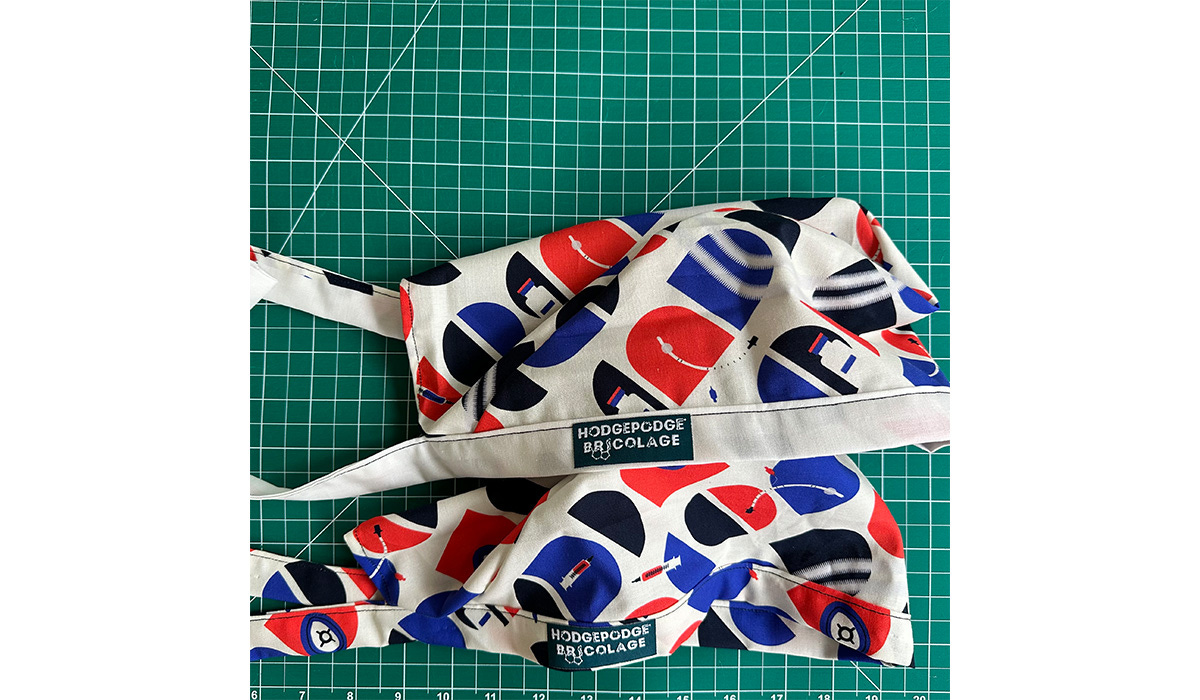
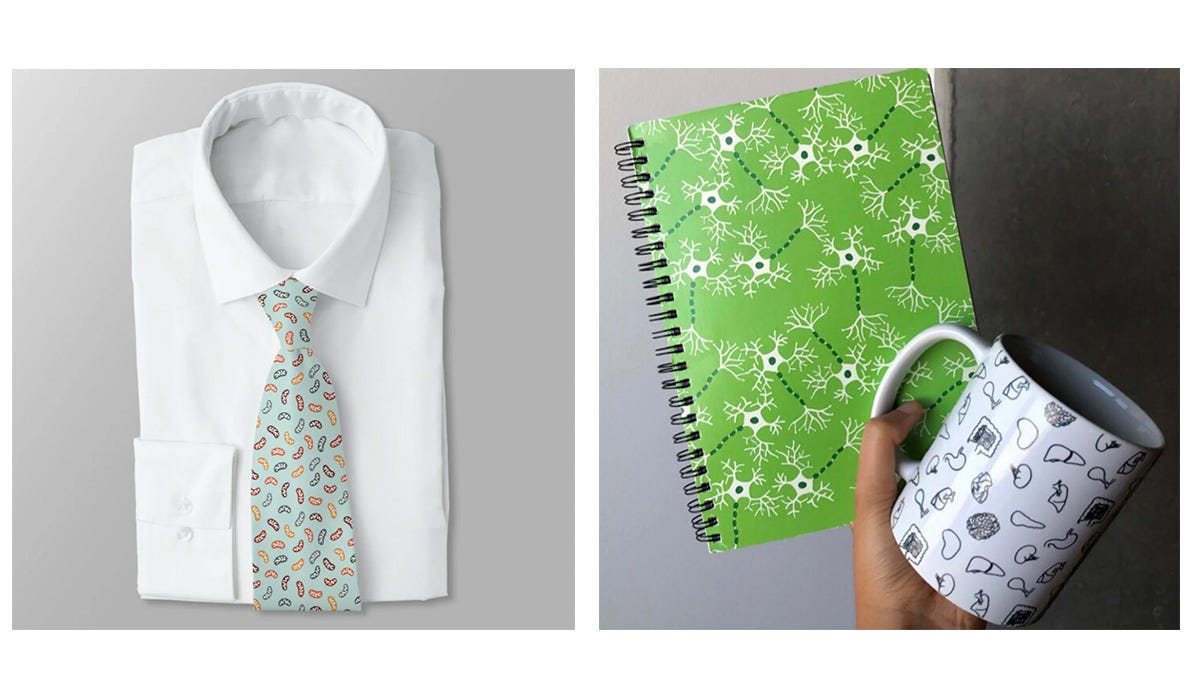
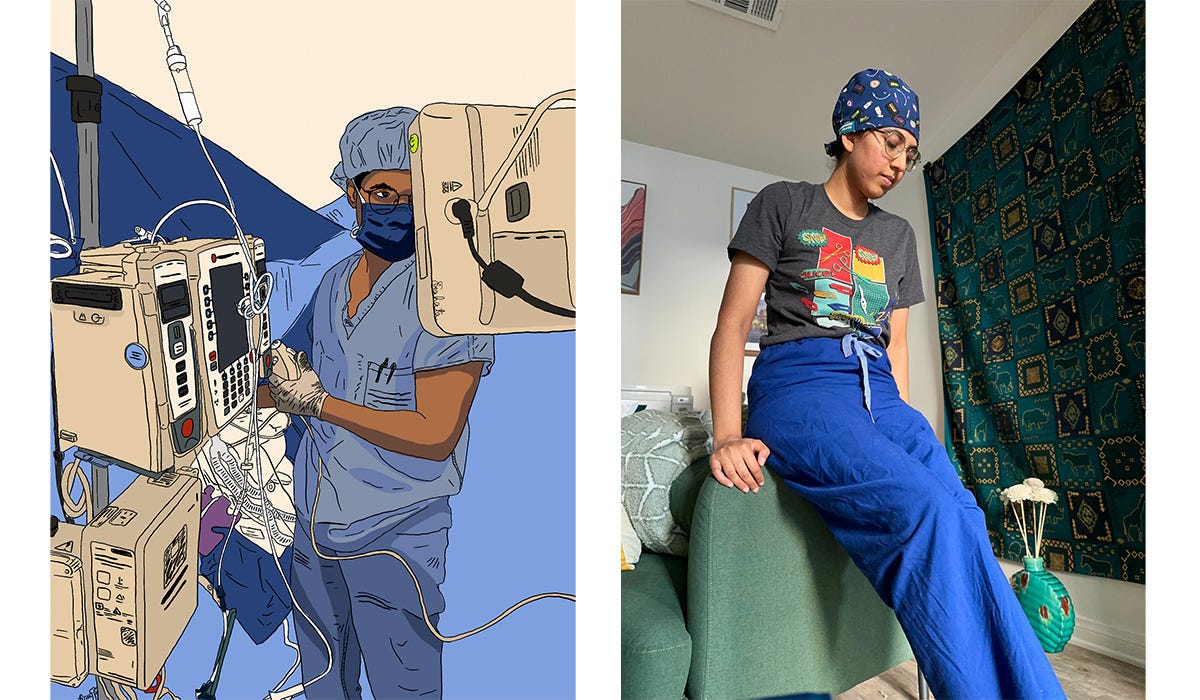
Thank you for this introduction to Dr. Mahata's art. How cool that her mask was made famous! I would love to see her artwork as a mural in a hospital. My hospital just did a community mural in one of our hallways, but a healthcare team members mural would have been an awesome addition.